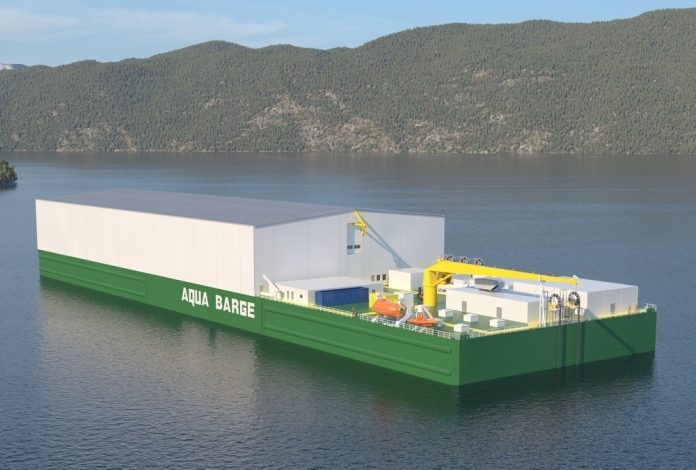Albatros Technology application for development licenses turned down.
The Dutch company Albatros Technology was the first foreign-registered company to apply for development licenses, but the “AquaBarge” concept was rejected by the Norwegian Directorate of Fisheries. An appeal could be on the cards.
“We’ll sit ourselves down and scrutinise the rejection, and see if there’s grounds for an appeal to be submitted,” Arne Ramstad told SalmonBusiness.
Ramstad is Business Development Manager at Albatros Technology, and has been involved in the project since Day One.
“No panic station here,” was Ramstad’s comment after the rejection.
Will put forward their side of the argument
The company had applied for nine development licenses for the “AquaBarge”, which is a floating sea vessel designed to raise salmon on board in a closed containment system based on RAS (recirculating aquaculture system) technology.
The barge has the following dimensions: length 195 metres, width 55 metres and depth 22 metres. The company is aiming to achieve production volume of 10,000 tonnes salmon annually.
The plan is for the barge to be located at Sauda in Rogaland County in Norway, but the directorate turned down the company’s application for the development licenses.
The reason given was that the concept did not meet the condition of “significant innovation”. The decision letter clearly stated that both RAS and barge technology intended for the “AquaBarge”, are technologies that are already known.
According to Ramstad, they will single out and examine elements that emphasize the innovative aspect.
“Where should the line be drawn for deciding what is innovative? We have to come up with arguments for our solution that covers the innovative aspect. I believe it is wise to try out different solutions, independent of how innovative they are,” said Ramstad, but stressed that he appreciates the Directorate of Fisheries must comply with its regulations and assessments.
“We respect that, and the Directorate of Fisheries has acted with integrity throughout the process,” he added.
Sees improvement compared to land-based RAS plant
The directorate nonetheless stated in its decision that the concept does have a certain element of originality. This is because it combines RAS and barge technology, and that it can become the first floating RAS plant.
However, the directorate added that they do not see any significant improvement compared to land-based RAS plant.
Ramstad is of an entirely different opinion.
“This construction does not encroach in any manner whatsoever on a vulnerable environment. We are floating and mobile. As long as it is a fjord, we can be stationary there. That is what is so ingenious about it, and the design is spectacular,” he said.
Ramstad also stressed that around 80-90 percent of the technology in the “AquaBarge” is of Norwegian origin. Aquaoptima of Trondheim has designed the actual plant. Nofima and SINTEF are also participating in the project.

